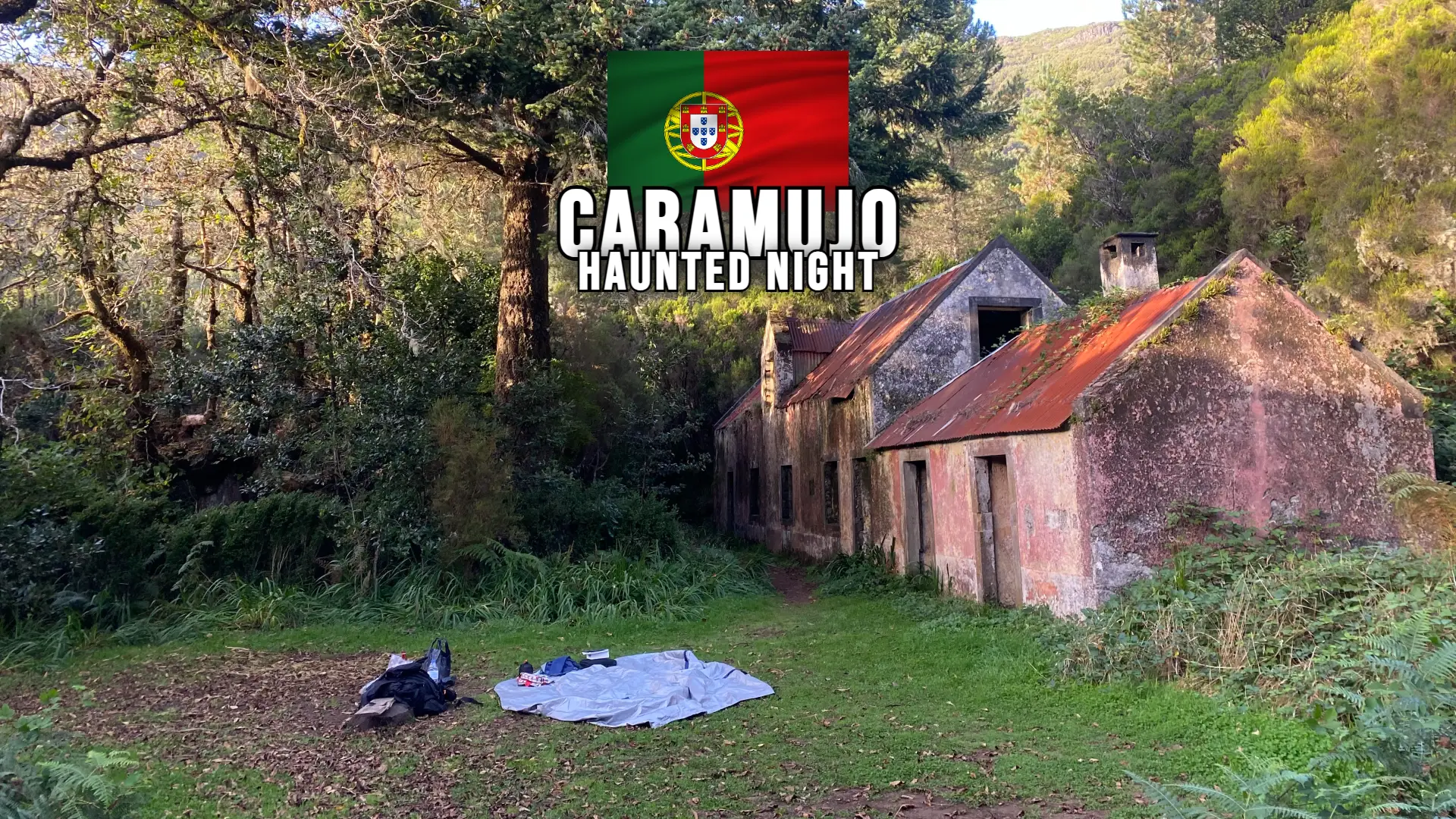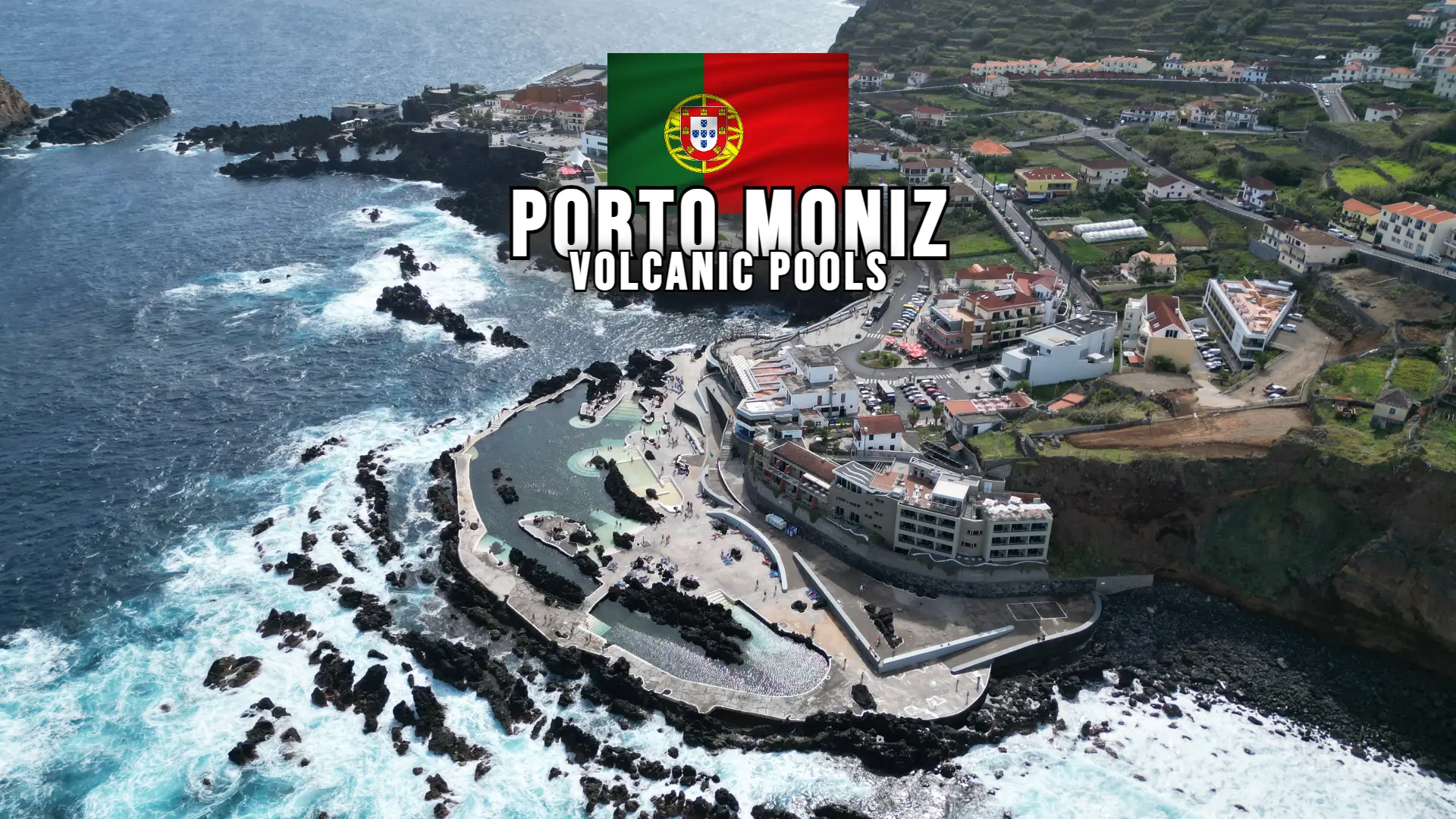On this day we woke up around 10 a.m., a little more rested, and went for a wonderful breakfast at the Hotel Stabia with an incredible view of Mount Vesuvius. Then we went to wash our clothes, after all, it had been three days and we had some dirty clothes.
Best way to wash clothes while traveling
A very important tip for those traveling for a longer period of time is to plan your clothing. Have clothes to wear during the day and at night, clothes that can be worn for several different activities, whether you’re going for a walk during the day or at night. That way you don’t have to pack so many different outfits and bulk up your suitcase. Another tip is to accumulate more dirty clothes to wash, so you don’t have to take time out of your trip. You can accumulate 4 or 5 days’ worth of dirty clothes and wash them all at once, so that day is spent washing and resting, as if it were a day off.
Train from Castellammare di Stabia to Sorrento
After the laundry, we left our clothes at the hotel and went to Castellammare di Stabia train station to buy our tickets to Sorrento. Each ticket costs €4.50.
We got off at the station and walked down the street, turning left when we saw the main square, Piazza Angelina Lauro. Heading straight on, we passed several stores and found the Monument of Santo Antonino Abbate, which is now the center of Sorrento.
Looking to the right you can see one of Sorrento’s most iconic streets, Via Luigi de Maio, with a beautiful view of the sea. You can go down the stairs next to Daniele’s Club. We went down and followed Via Luigi de Maio all the way to the docks and turned right until we found the Ticket Office. There they sell ferry tickets and excursions to Capri, Naples, Amalfi and various other locations in the region. We went into a few shops and I bought a very nice cloth with important places in Italy on it, like a map. Then we went for lunch at Ristorante Ruccio, where we had two pizzas and an orange juice. Lunch cost 39€.
Sorrento ferry ticket office
Next, we went to the Ticket Office for the island of Capri to get some information, after all, we were already there and wanted to see the best of the area. The Ticket Office is on a corner, next to Ristorante Roccio. Tickets to Capri from Sorrento cost €40.50. On the Isle of Capri there are boats going around the island all the time, so don’t worry, you can find a tour of the island right there if you wish.
A Little About Sorrento
Sorrento, a captivating town located on the southwestern coast of Italy, is a jewel of the Campania region. Perched atop cliffs that overlook the Bay of Naples and Mount Vesuvius, Sorrento is renowned for its stunning vistas, charming streets, and rich history.
The town’s history traces back to ancient times, when it was a favored resort for Roman aristocrats. Sorrento’s name is believed to have been derived from the mythical sirens of Greek mythology, who were said to have lured sailors with their enchanting songs near these shores.
One of Sorrento’s most iconic features is its dramatic coastline. The sheer cliffs offer breathtaking views of the Mediterranean Sea, and the town’s pastel-colored buildings create a picturesque scene that has inspired artists, writers, and travelers for centuries.
Sorrento’s historic center is a labyrinth of narrow alleyways, cobblestone streets, and quaint squares. Piazza Tasso, the main square, is a hub of activity with cafes, shops, and a lively atmosphere. The town’s cathedral, dedicated to Saints Philip and James, is a notable landmark featuring intricate architecture and beautiful frescoes.
Known for its production of limoncello, a tangy lemon liqueur, Sorrento is surrounded by lemon groves that thrive in the Mediterranean climate. Visitors can explore local shops to taste and purchase this regional specialty.
Sorrento is also a gateway to some of Italy’s most famous attractions. The Amalfi Coast, with its stunning coastal drive and charming villages like Positano and Amalfi, is easily accessible from Sorrento. Additionally, the ancient city of Pompeii, frozen in time by the eruption of Mount Vesuvius, is a short train ride away.
The town’s natural beauty and cultural heritage are further enhanced by its proximity to the island of Capri, a luxurious destination known for its stunning landscapes and celebrity allure. Ferries from Sorrento make it convenient for visitors to explore the island’s beauty.
The ferry price from Sorrento to Capri is €40.50.
Sorrento’s unique blend of history, natural beauty, and warm hospitality make it a sought-after destination for travelers looking to experience the essence of southern Italy. Whether savoring local cuisine, enjoying panoramic views, or simply wandering through its charming streets, Sorrento offers an unforgettable Italian experience.
First Impressions of Sorrento
We left the Ticket Office next to Ristorante Roccio and headed for the elevator to go up to the historic center of Sorrento. Many people don’t know it, but they end up going down all those stairs and up again, when they could just pay €1.50 to take the elevator.
To get to the elevator, turn right towards Peter’s Beach and go straight down the cliff. You should go to the place I’ve left below, that’s the entrance to the elevator.
https://goo.gl/maps/Y6kFsyYZcvHaKpf69
The elevator to the Villa Comunale di Sorrento costs €1.50 per person.
The charming center of Sorrento
From there we walked through the streets of Sorrento, browsing the little shops. A very interesting fact is that most of the products sold there are locally produced, made by the locals themselves. The streets are very beautiful, full of charm, well decorated, all very colorful and charming. It’s worth spending a few hours getting to know each street, each little shop, going in and getting to know each other, talking to the vendors and the people on the street. I took some photos and I’ll show them to you below.
Limoncello, a typical drink from the Amalfi Coast
I went into a Limoncello shop and it looked like there was a party going on inside. I met a lot of fun people, a group of five, two of whom were Davide and Marianna. I bought my limoncello, a typical drink from the Amalfi Coast region. It’s a kind of sweet liqueur with the flavor of Sicilian lemon, with a taste that is very reminiscent of the region’s characteristics. I bought my small bottle of Limoncello for €3.00.
History of Limoncello
Limoncello is a vibrant and aromatic lemon liqueur that originates from the stunning Amalfi Coast of Italy. This iconic drink is celebrated for its refreshing taste, intense lemon flavor, and vibrant yellow hue. Here’s a glimpse into the world of limoncello:
Origins and Ingredients: Limoncello’s history dates back to the early 20th century, with its roots firmly embedded in the lemon-rich region of the Amalfi Coast, Sorrento, and the Isle of Capri. The drink’s foundation is simple, yet essential: the zest of locally grown lemons, alcohol, water, and sugar. The quality of ingredients, particularly the lemons, is crucial to achieving the authentic and exquisite flavor that defines limoncello.
Production Process: The production process of limoncello is a labor of love that requires time and patience. Lemon zest, carefully peeled to avoid the bitter pith, is steeped in alcohol, usually a high-proof spirit like grain alcohol or vodka. This infusion can take several weeks, allowing the oils from the lemon zest to infuse the alcohol with their distinctive fragrance and taste.
After the infusion period, a simple syrup made from water and sugar is added to the lemon-infused alcohol. This step not only imparts sweetness to balance the tartness of the lemons but also contributes to the liqueur’s smooth texture. The final mixture is then strained and typically left to mature for a short period, allowing the flavors to meld before bottling.
Taste and Serving: Limoncello is cherished for its unmistakable lemony aroma and vibrant citrus flavor. It delivers a delightful combination of sweetness and tanginess, making it a perfect after-dinner digestif or a refreshing drink on a warm day. The liqueur is typically served chilled in small, chilled glasses to enhance its invigorating qualities. Some even prefer to savor it straight from the freezer, as the cold temperature intensifies the lemony essence.
Cultural Significance: Limoncello is more than just a drink; it’s a symbol of the Amalfi Coast’s unique terroir and way of life. The drink’s popularity has grown beyond Italy’s borders, becoming a sought-after souvenir for tourists and a favored choice among cocktail enthusiasts. Its connection to the region’s abundant lemon orchards and the local tradition of using lemons for a variety of culinary and artisanal products has solidified limoncello’s status as a cherished emblem of Amalfi Coast culture.
Sipping on a glass of limoncello is like capturing the essence of the sun-drenched Amalfi Coast in a bottle. With every tangy-sweet sip, you’re transported to the picturesque lemon groves and stunning coastal landscapes that define this captivating Italian region.
History of Sorrento
The history of Sorrento, Italy, is a tale that stretches back through millennia, woven with influences from various civilizations and cultures. This enchanting town on the Campania coast has a rich and diverse history that has shaped its character and allure.
Ancient Origins: The origins of Sorrento can be traced back to ancient times. The Greeks were among the first to establish a settlement here, drawn by its strategic coastal location and fertile land. They named the town “Surrentum,” and it quickly became an important trading hub.
Roman Influence: With the rise of the Roman Empire, Sorrento’s significance grew further. The Romans recognized its potential as a resort destination and built lavish villas along the cliffs, enjoying the stunning views of the Bay of Naples. The town flourished as a vacation spot for wealthy Romans seeking relaxation and natural beauty.
Medieval Times: The fall of the Roman Empire marked a period of instability in Sorrento’s history. It was successively ruled by Byzantines, Goths, and Lombards. In the 9th century, Sorrento came under the control of the Duchy of Naples. During this time, the town’s defensive walls were reinforced, which can still be seen today.
Maritime Republic: In the 12th century, Sorrento emerged as a maritime republic, much like nearby Amalfi. The town’s trading prowess extended to other Mediterranean ports, and it flourished economically and culturally. This era saw the construction of churches, palaces, and fortifications that still grace the town.
Foreign Domination: Over the centuries, Sorrento faced challenges from foreign powers, including Angevins, Aragonese, and Spanish rulers. Despite these changes in sovereignty, the town managed to preserve its unique identity and artistic heritage. The Baroque period left its mark on Sorrento’s architecture, adding another layer to its cultural tapestry.
The Modern Era: In the 19th century, Sorrento’s natural beauty drew the attention of artists and writers, including Lord Byron and Henrik Ibsen, who sought inspiration from its landscapes. The town’s reputation as a tourist destination continued to grow, and it became a haven for travelers seeking the allure of the Italian coastline.
Today, Sorrento remains a captivating blend of history, art, and natural beauty. Its cobblestone streets, lemon-scented air, and breathtaking vistas continue to enchant visitors from around the world. Sorrento’s unique history is not only evident in its architecture and landmarks but also in the warmth of its people and the timeless charm that pervades every corner of this coastal gem.
Main attractions to see in Sorrento
Sorrento, Italy, is a treasure trove of captivating attractions that showcase its history, culture, and stunning natural beauty. Here are some of the main attractions that you shouldn’t miss while exploring this enchanting coastal town:
- Piazza Tasso: The heart of Sorrento, Piazza Tasso is a bustling square surrounded by cafes, restaurants, and shops. It’s a perfect spot for people-watching and enjoying the lively atmosphere.
- Duomo di Sorrento: This cathedral, dedicated to Saints Philip and James, is a blend of different architectural styles, including Romanesque and Baroque. Its stunning interior features intricate frescoes and marble detailing.
- Villa Comunale: Also known as the Park of Villa Comunale, this public garden offers panoramic views of the Gulf of Naples, Mount Vesuvius, and the coastline. It’s a great place to relax and take in the scenery.
- Marina Grande: This charming fishing village is a short walk from the center of Sorrento. The colorful houses, small beach, and seafood restaurants create a picturesque setting.
- Sorrento Peninsula: Explore the scenic coastline and take in the breathtaking views. The rugged cliffs, crystal-clear waters, and hidden coves make for a memorable adventure.
- Correale Museum: This museum houses a diverse collection of art and historical artifacts, including paintings, furniture, and ceramics. The building itself is an architectural gem.
- Valle dei Mulini: A historic area with remnants of old mills that used to operate here. It’s a unique glimpse into Sorrento’s past as a bustling commercial center.
- Sedile Dominova: A historic building that was once used as a gathering place for Sorrento’s aristocracy. Its beautiful architecture is a testament to the town’s rich history.
- Bagni della Regina Giovanna: A natural pool located in a rocky inlet, offering a picturesque spot for swimming and enjoying the coastal beauty of Sorrento.
- Lemon Groves: Sorrento is known for its lemons, and you can explore the fragrant lemon groves in the area. Don’t miss the opportunity to try limoncello, a local lemon liqueur.
- Chiostro di San Francesco: This 14th-century cloister is a peaceful oasis featuring stunning archways and a lush garden. It’s a great place to escape the hustle and bustle of the town.
- Punta del Capo: A scenic promontory offering spectacular views of the Gulf of Naples and the Amalfi Coast. It’s a popular spot for hiking and taking in the coastal beauty.
These attractions, among others, capture the essence of Sorrento’s history, culture, and natural splendor. Whether you’re strolling through the historic streets, enjoying the coastal vistas, or immersing yourself in the local traditions, Sorrento offers a truly unforgettable experience for visitors.
Bagni della Regina Giovanna
Leaving the center, we headed towards the Bagni della Regina Giovanna. Our initial idea was to walk. We passed some beautiful places on the way, walked for about 20 minutes, but at one point we met some people sitting at the bus stop, so we decided to stop there too and wait with them for the next bus to the Bagni della Regina Giovanna. We paid €1.50 for the bus.
From the center of Sorrento to the Bagni della Regina Giovanna is 2.9 km, about 40 minutes on foot. By bus it’s quicker, about 10 minutes.
The bus drops us off at the road, where we have to walk to the Bagni della Regina Giovanna, about a 10-minute walk to the end point, it’s only downhill, so it’s easier. We turn right down an alleyway. It’s always a place with tourists and people frequenting it, it’s not difficult to get there, just ask one or the other and you’ll get information.
You should stop exactly where I leave it below.
https://goo.gl/maps/2WbNyd5WEP6eWb89A
When you get off the bus, turn right and you’ll pass the Parrocchia S Rosario. From there, just keep walking straight ahead until you reach the Bagni della Regina Giovanna. You’ll feel the same as I did as you walk along the path, walking and walking and out of nowhere you hear the sound of the sea, you start to see the rocks and people jumping from the rocks into the sea. I also went diving there, it was great and I recommend that anyone who goes to Sorrento takes some time out and goes to the Bagni della Regina Giovanna, it’s really worth it.
At the end of the day, we took the same bus that passed by in the direction of the center of Sorrento, which fortunately stops in front of the train station. We took the next train to Castellammare di Stabia for dinner. This time we had gnocchi and then I had a watermelon in the same fruit shop as last night.
Then we went back to the hotel to sleep. It was a great day and I would definitely go back to Sorrento again!









